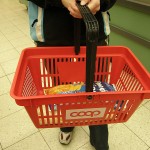Consumer spending almost freezes in May due to rising prices
Consumer spending was flat in May amid the weak job market and increasing commodity and food prices that force more Americans to shop for less goods.
The latest figures from the Commerce Department showed a mere 0.3 percent gain in purchases, the lamest since June 2010. Not including energy and food prices, the prices rose larger than expected.
Retailer Walgreen is reporting that their customers have cut back on purchases of non-essential items. The poor consumer spending however has been expected by the U.S. Federal Reserve, who earlier said it projects the economy to pick up again as the year draws to a close.
The Commerce Department report also showed that inflation related to consumer spending increased 2.5 percent compared to 12 months earlier.
Salaries rose 0.2 percent on average in May, lower than the 0.4 percent in April, while disposable incomes inched 0.6 percent higher year-on-year, the report said. When adjusted for inflation it was the smallest increase since May 2010.
The Labor Department in a report June 3 said that the unemployment rate increased slightly to 9.1 percent, the highest level since the year began. Payrolls rose by 54,000 in May, the smallest gain in eight months.
The weak labor market, high fuel prices and the lethargic housing sector have all curtailed U.S. consumer spending in recent months.
Federal Reserve chairman Ben S. Bernanke said in press conference on June 22 that factors and indicators such as consumer spending which are slowing down the U.S. economy "are likely to be temporary."
